What’s better than one Paris-Roubaix? Two Paris-Roubaixs, of course. After Pauline Ferrand-Prévot’s victory on Saturday, the cobbles waited for the men on Sunday, giving us another chance to eye up all the latest tech insights.
At the start in Compiègne, the men’s teams arrived to a sprinkling of rain. The mechanics lined the bikes along the road, and as the riders readied themselves, sheltered in their buses, Cycling Weekly roamed the paddocks with a camera.
Here are the most interesting set-ups we saw, including some eye-catchingly skinny 26mm tyres, a 62-tooth chainring, and unreleased ‘smart wheels’.
Monster chainrings
(Image credit: Tom Davidson)
Keeping his title from last year, Josh Tarling boasted the biggest chainring at this edition of Paris-Roubaix, running a dinnerplate-sized 62-tooth, made by Digirit.
The Brit, tall in stature and known for his time trialling prowess, prefers a 1x (single chainring) set-up for flatter races, where he can hold high power.
Tarling wasn’t the only Ineos Grenadiers rider running a custom chainring. Connor Swift, too, opted for a non-sponsor-specific single chainring, his one made by aero brand Drag2Zero.
After Tarling’s, the next biggest chainring we saw was a 58-tooth, courtesy of Gonzalo Serrano (Movistar).
The latest race content, interviews, features, reviews and expert buying guides, direct to your inbox!
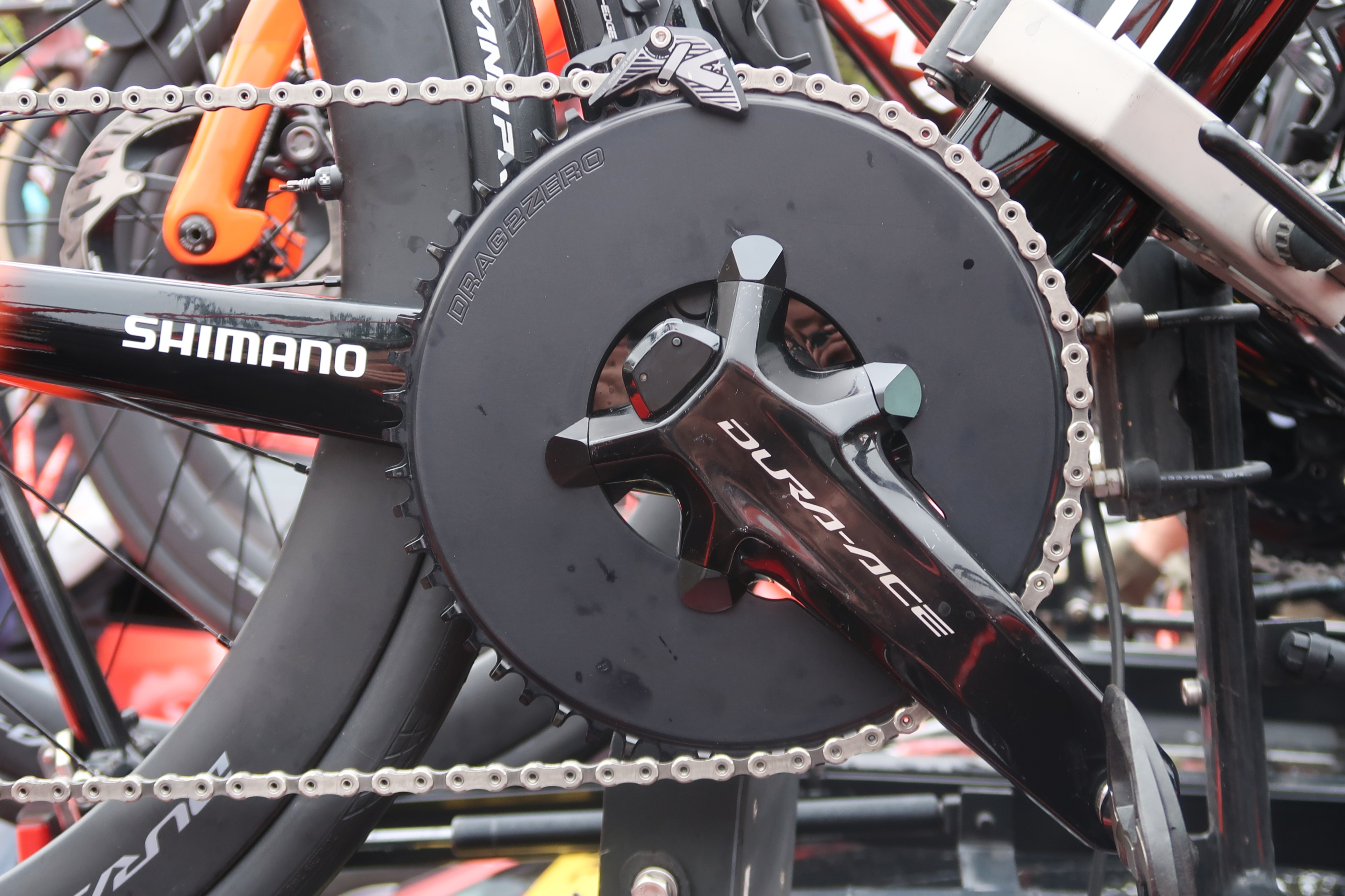
Connor Swift used a 1x Drag2Zero chainring, with a chain guide.
(Image credit: Tom Davidson)
Tyre inflation system
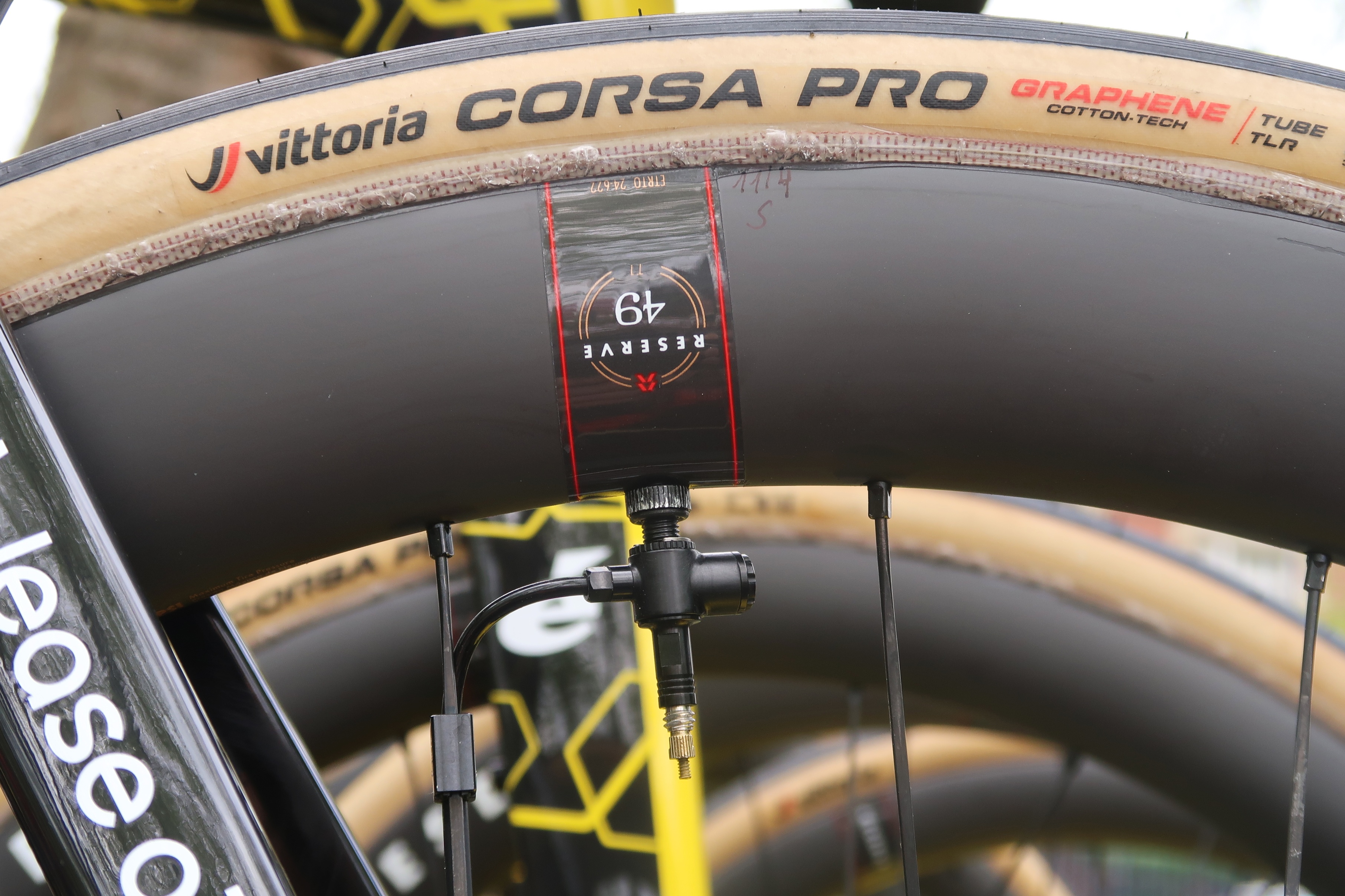
(Image credit: Tom Davidson)
In the run-up to this year’s Paris-Roubaix, it was no secret that Visma-Lease a Bike had opted unanimously for adjustable tyre pressure systems.
The entirety of the women’s team used them on Saturday, including Pauline Ferrand-Prévot who hailed the effectiveness of the technology, managed in the wheel’s hub.
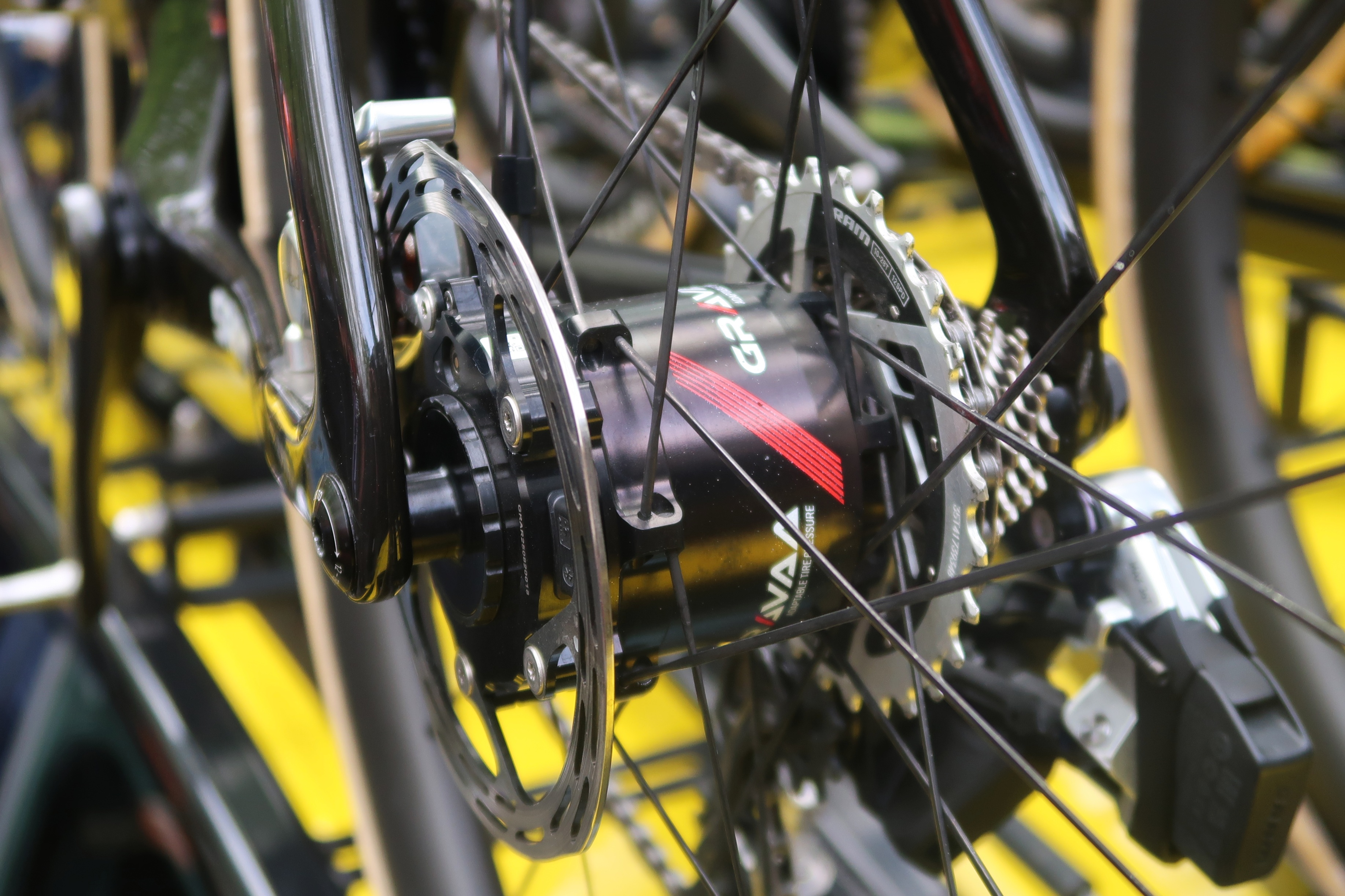
(Image credit: Tom Davidson)
Made by Netherlands-based company Gravaa, the systems allow riders to inflate and deflate their tyres with the touch of a button on their handlebars. This means they can drop pressure on the cobbled sectors, and increase it for less rolling resistance on the tarmac.
Taking no risks, Wout van Aert relied on five spare bikes, shared across two follow cars. He had the Gravaa system equipped to four of the bikes, and kept the fifth with standard valves.
The team also took extra precautions with their tubeless tyres, gluing them generously to the rims.
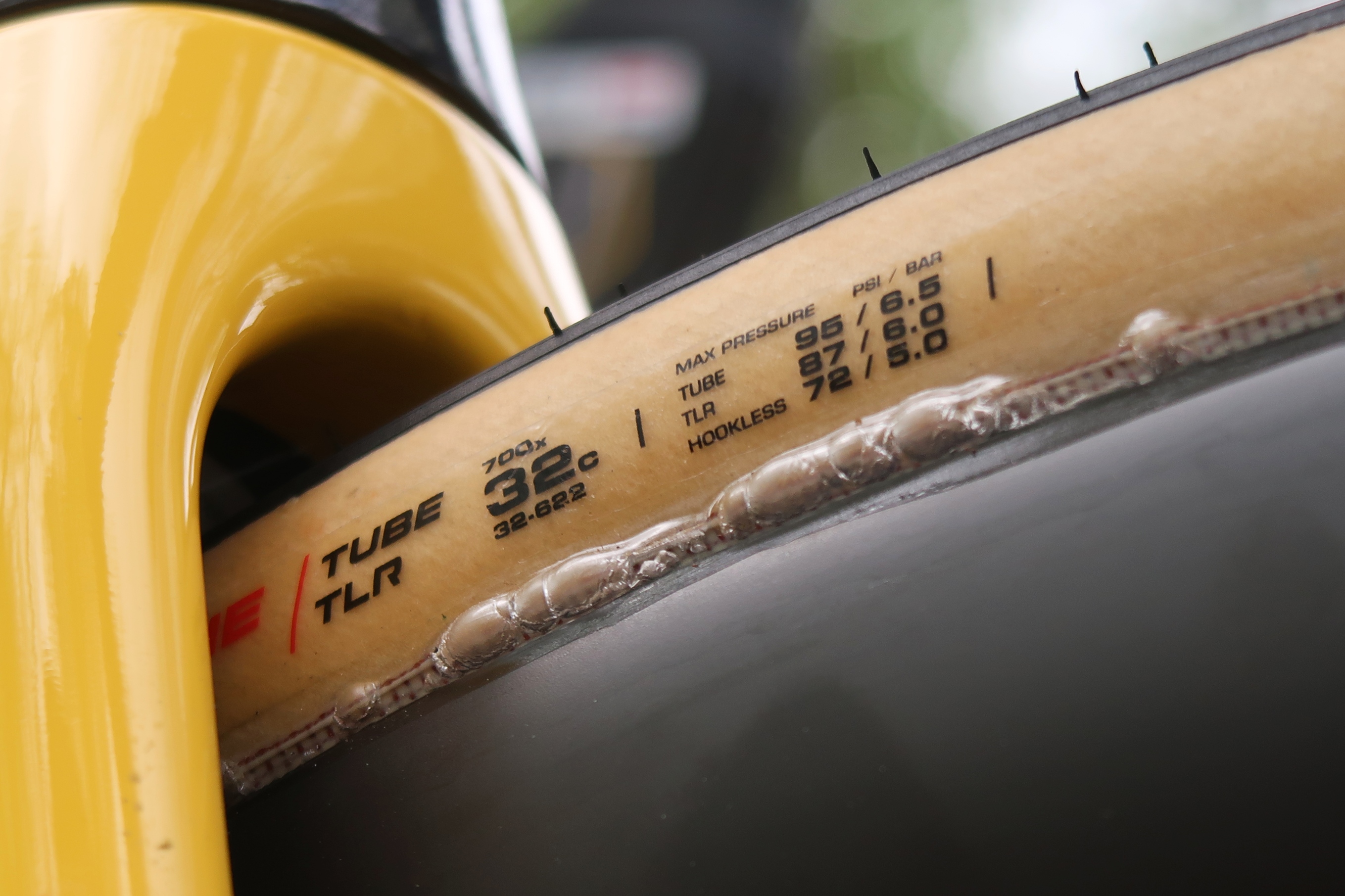
(Image credit: Tom Davidson)
A range of tyre widths
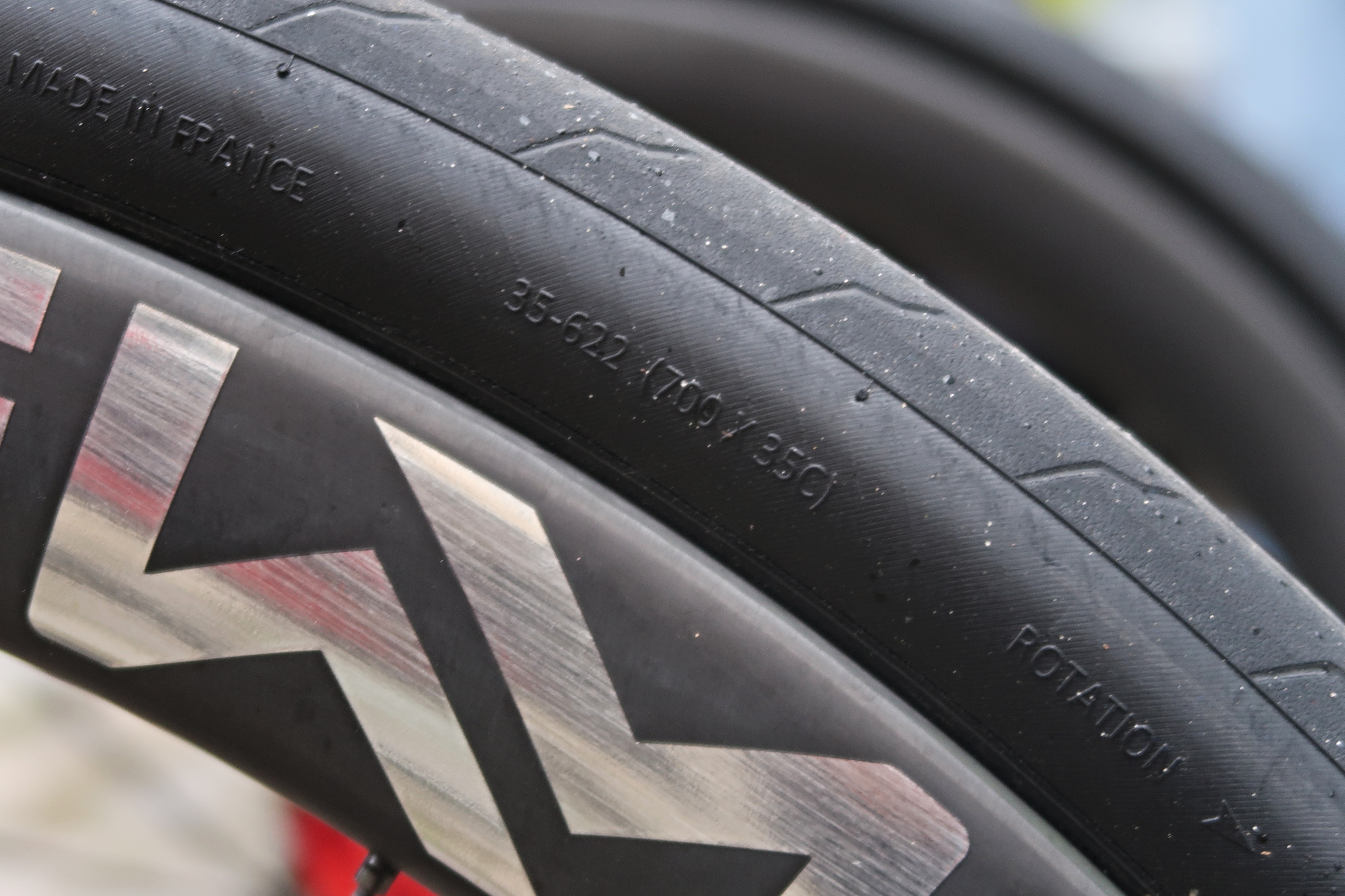
35mm tyres were the widest we saw.
(Image credit: Tom Davidson)
Back in the 90s, it was standard to see 25mm tyres at Paris-Roubaix. Nowadays, with better technology, and more of an emphasis on absorbing the jagged terrain, 32mm tends to be the norm.
We spotted a wide range of choices outside the team buses. The narrowest tyres we saw belonged to Red Bull-Bora Hansgrohe’s Ryan Mullen, who picked skinny 26mm Turbo Cottons. All of his teammates ran 32mm Mondo tyres.
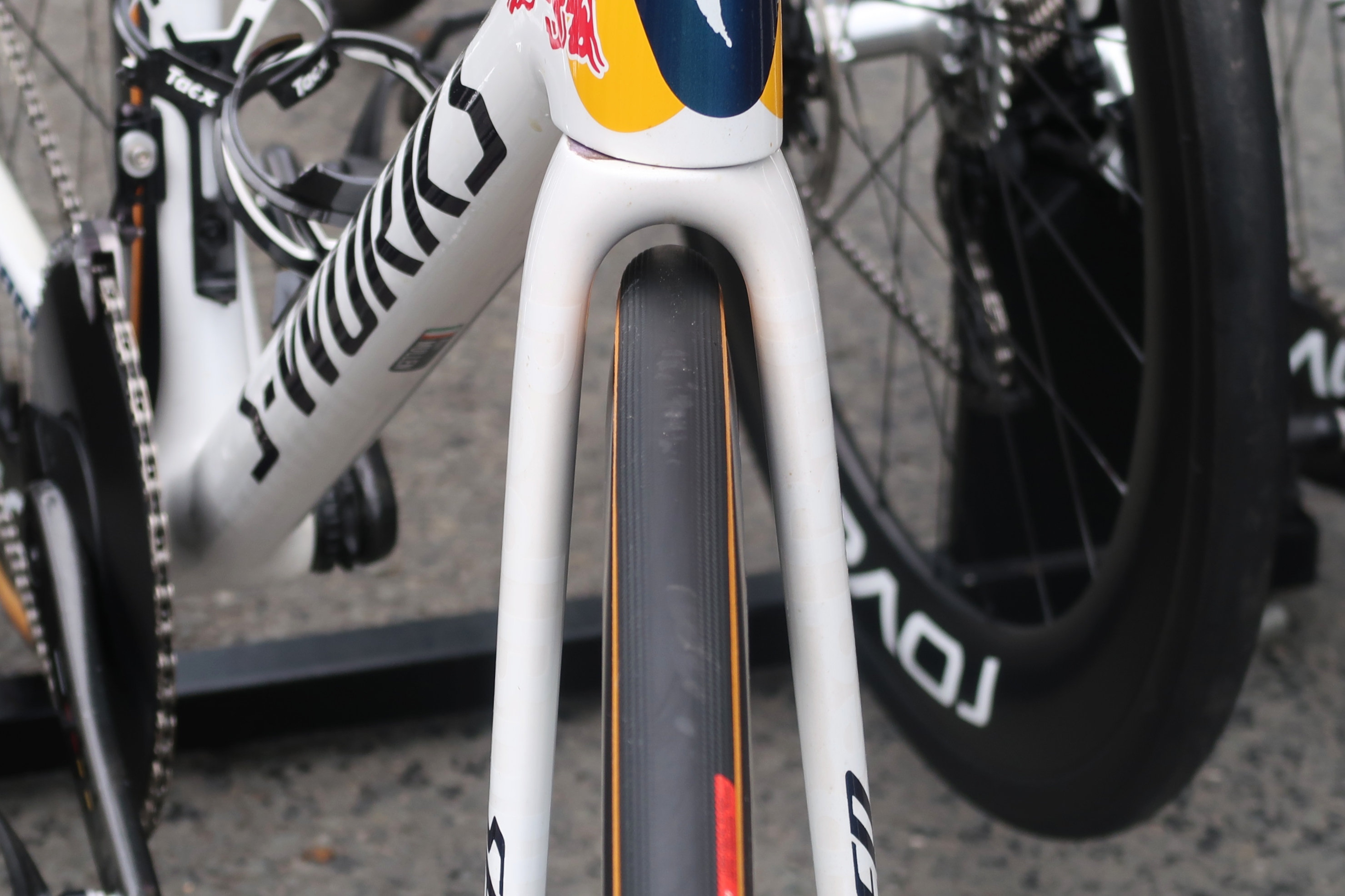
(Image credit: Tom Davidson)
Some teams went for 30mm tyres, namely Lotto, but most went for 32mm.
The biggest tyres we saw, as we did at the women’s race, were 35mm. This extra-wide choice was taken by Stefan Küng (Groupama-FDJ), Intermarché-Wanty riders Taco van der Hoorn and Laurenz Rex, and the entirety of Bahrain Victorious.
The picture below, of Rex’s bike, shows just how little clearance his 35mm tyres – a prototype made by Hutchinson – had with his frame. His mechanic told us there were some worries within the team about the tiny gap, concerned that “a small stone or even some dirt” could get lodged in between.
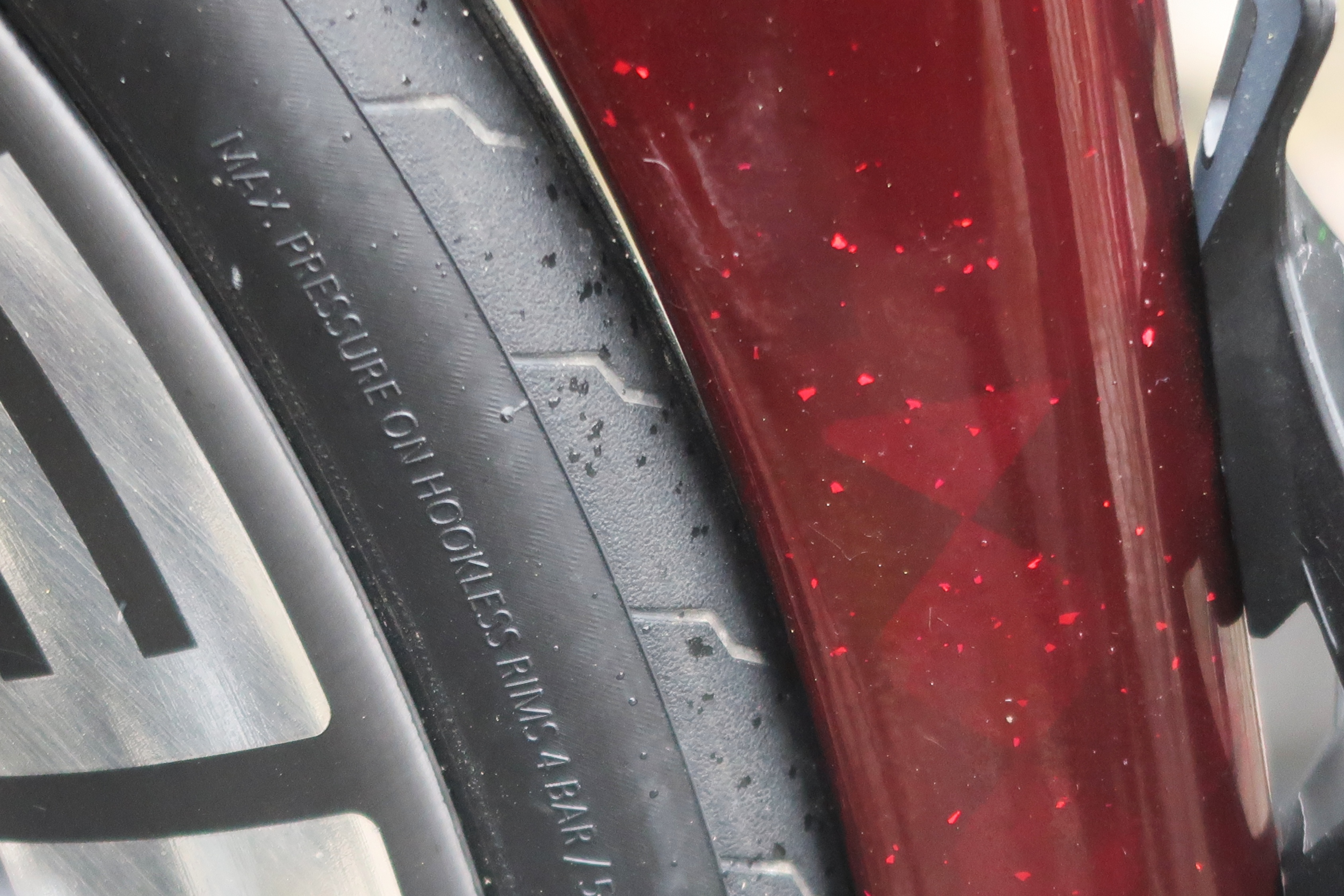
(Image credit: Tom Davidson)
Aero bikes with gravel wheels
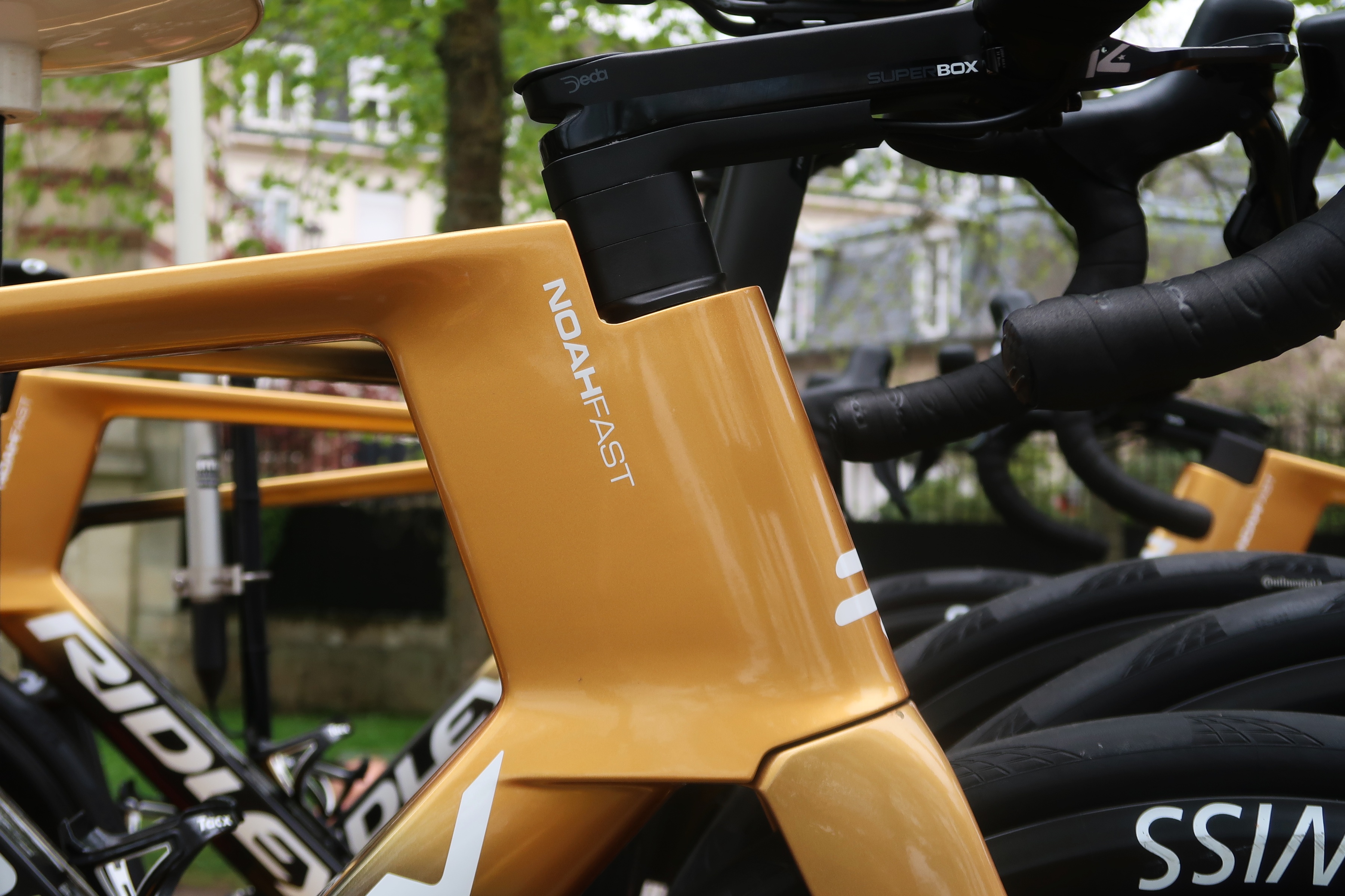
(Image credit: Tom Davidson)
One of the most interesting things we saw at the women’s race was Uno-X’s unique pairing of an aero bike with off-road-specific wheels.
The men’s team went for the same set-up on Sunday, combining the Ridley Noah Fast 3.0 aerobike, with DT Swiss’s GRC 1100 gravel wheels.
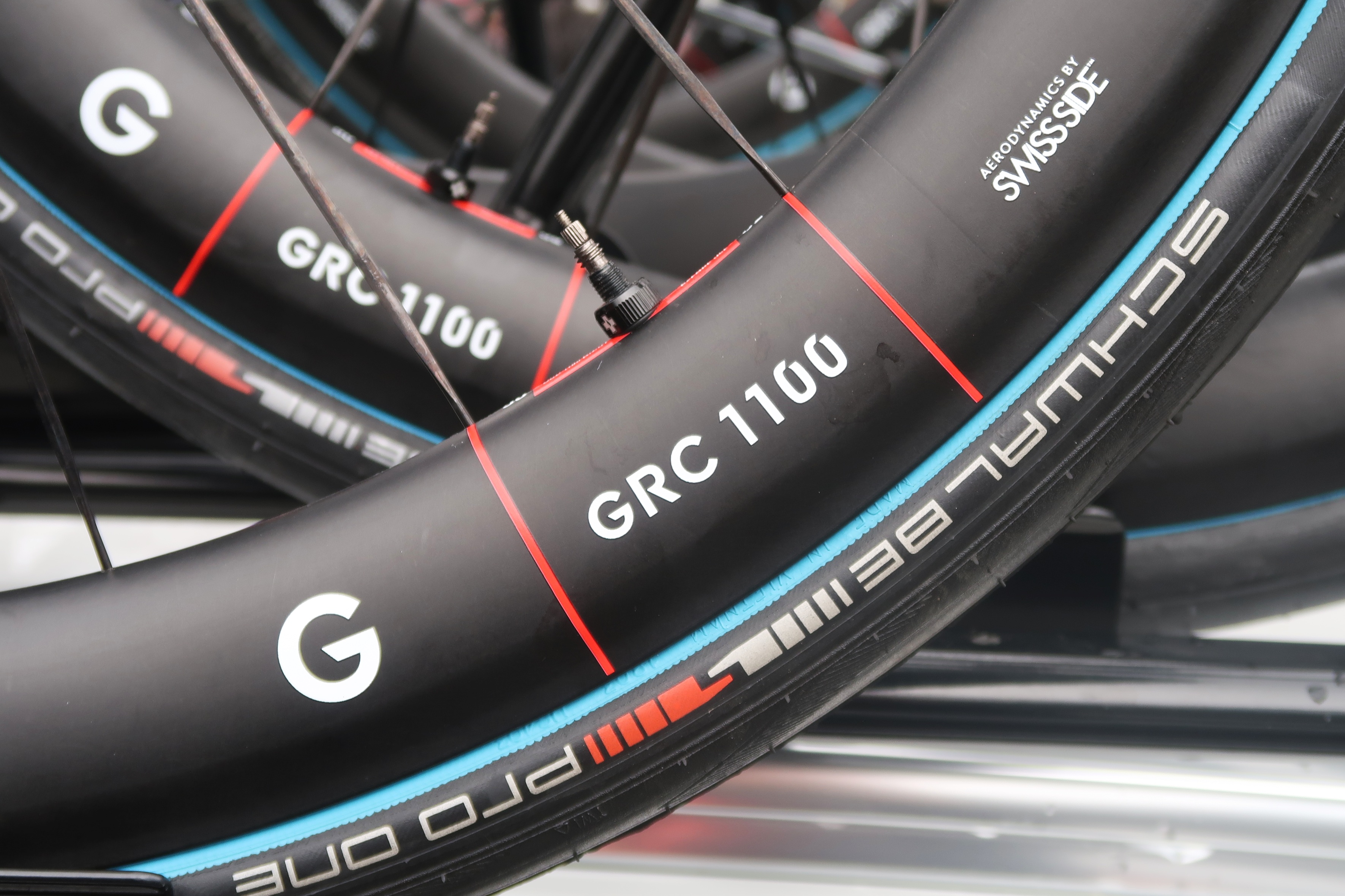
(Image credit: Tom Davidson)
Tudor, also supplied by DT Swiss, likewise went for the gravel wheels, which are designed to be more shock absorbent, but are still made from lightweight carbon.
Deep rims
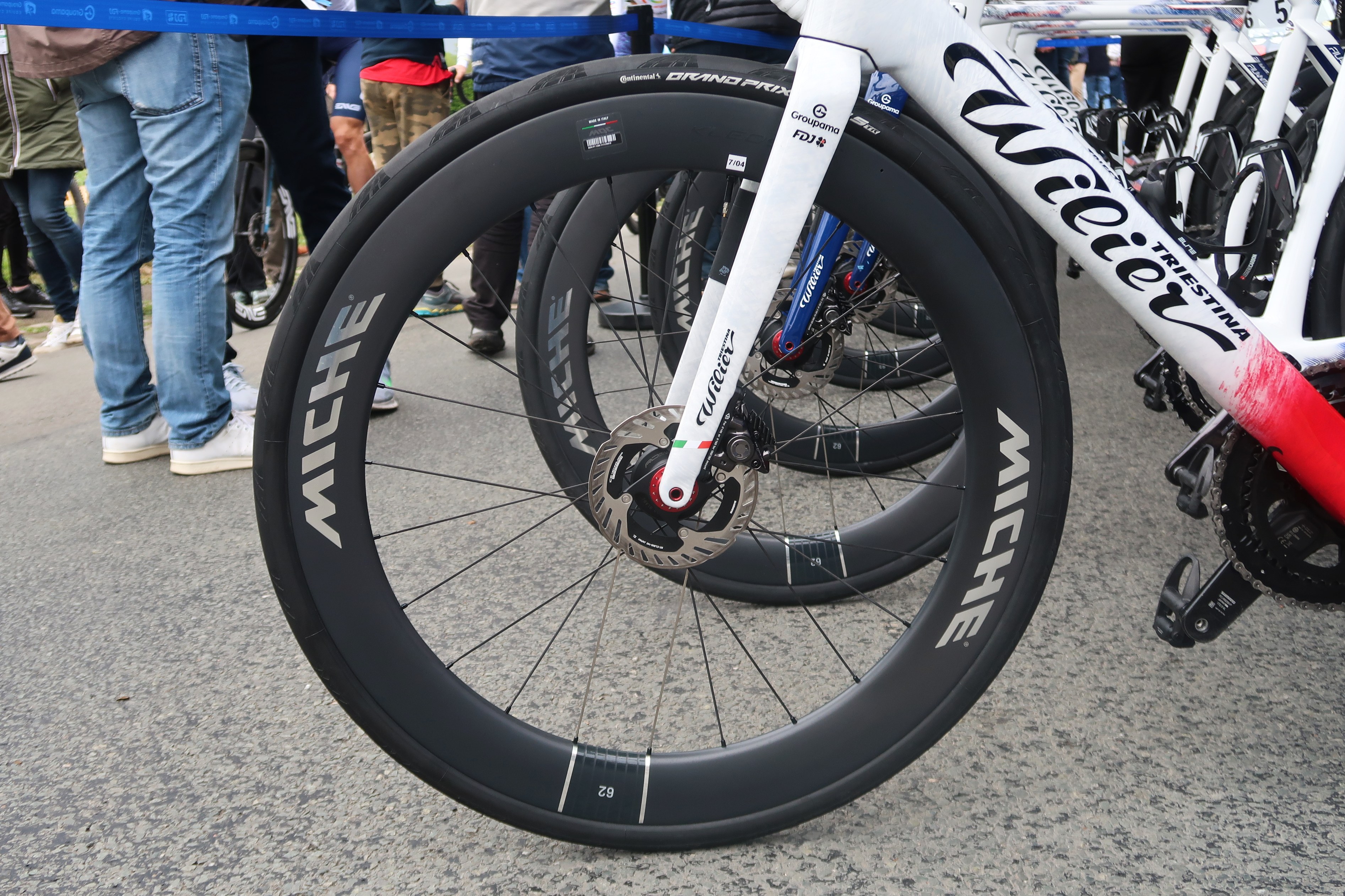
(Image credit: Tom Davidson)
Uno-X weren’t alone in showcasing aero tech at Paris-Roubaix. The race, after all, is a pan-flat smash across northern France, with average speeds in recent years nearing 50km/h.
With minimal wind forecast, many teams went for deep-section rims, looking for aero gains. The deepest we saw belonged to Groupama-FDJ’s Stefan Küng, who paired 62mm-deep rims, with 35mm-wide tyres. Fast, yet comfortable.
Smart wheels
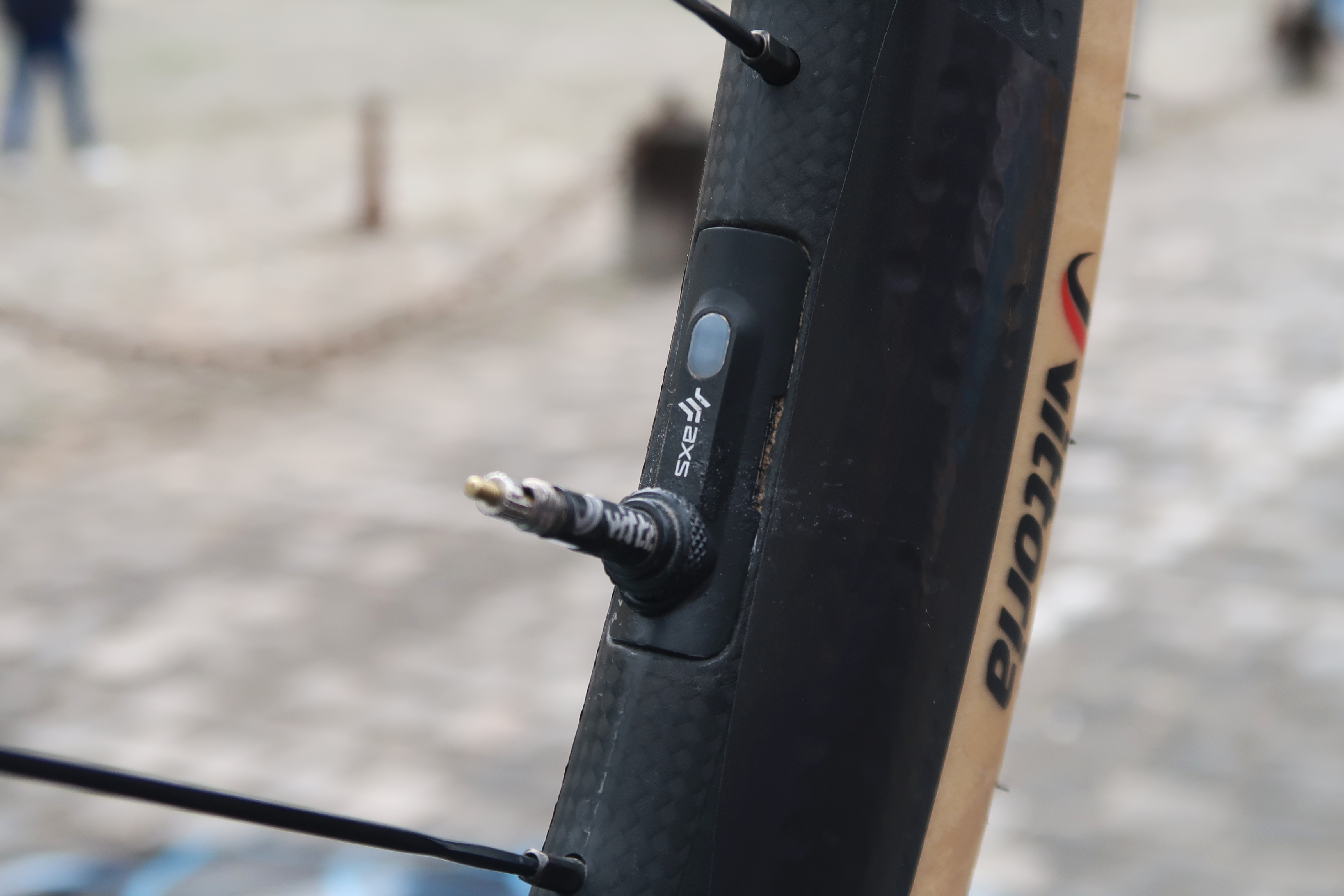
(Image credit: Tom Davidson)
As expected, the teams supplied with Zipp wheels – Q36.5 and Movistar – used the brand’s new, unreleased ‘smart wheels’.
The technology was first spotted on Tom Pidcock’s bike at Omloop Het Nieuwsblad, and has been used throughout the Classics, including at Paris-Roubaix Femmes on Saturday.
Although the smart wheels don’t self-inflate like Visma-Lease a Bike’s Gravaa system, patent information tells us they give feedback on points such as tyre pressure, rim health, and road surface. They are made as a mash-up of Zipp wheels and TyreWiz sensors – both brands owned by components manufacturer SRAM.
Other tidbits
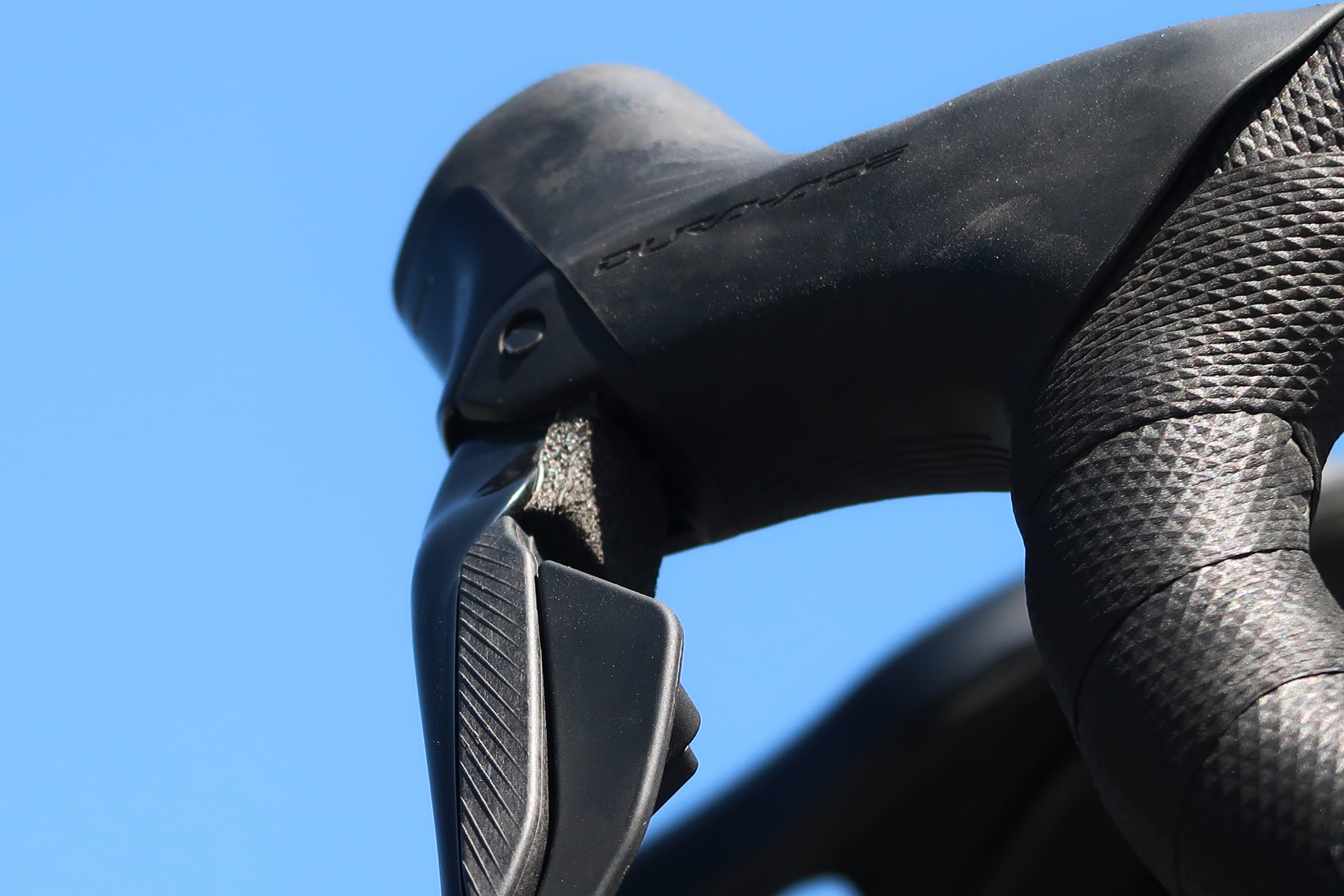
(Image credit: Tom Davidson)
Tadej Pogačar’s bike was tough to get near at the start in Compiègne, his team bus crowded by fans. Fortunately, we followed him during his recon on Friday, and spotted some interesting things in his set-up.
The first is that the world champion has small tabs of grippy padding attached under his hoods (above), stopping his fingers rubbing on the shifters across the cobbles.
Pogačar, and the rest of UAE Team Emirates, also used Colnago’s V4Rs bike, a versatile model ridden in Grand Tour mountain stages, and now the rough cobbles of Roubaix. Long gone are the days of cobble-specific bikes, like Specialized’s Roubaix, it seems.
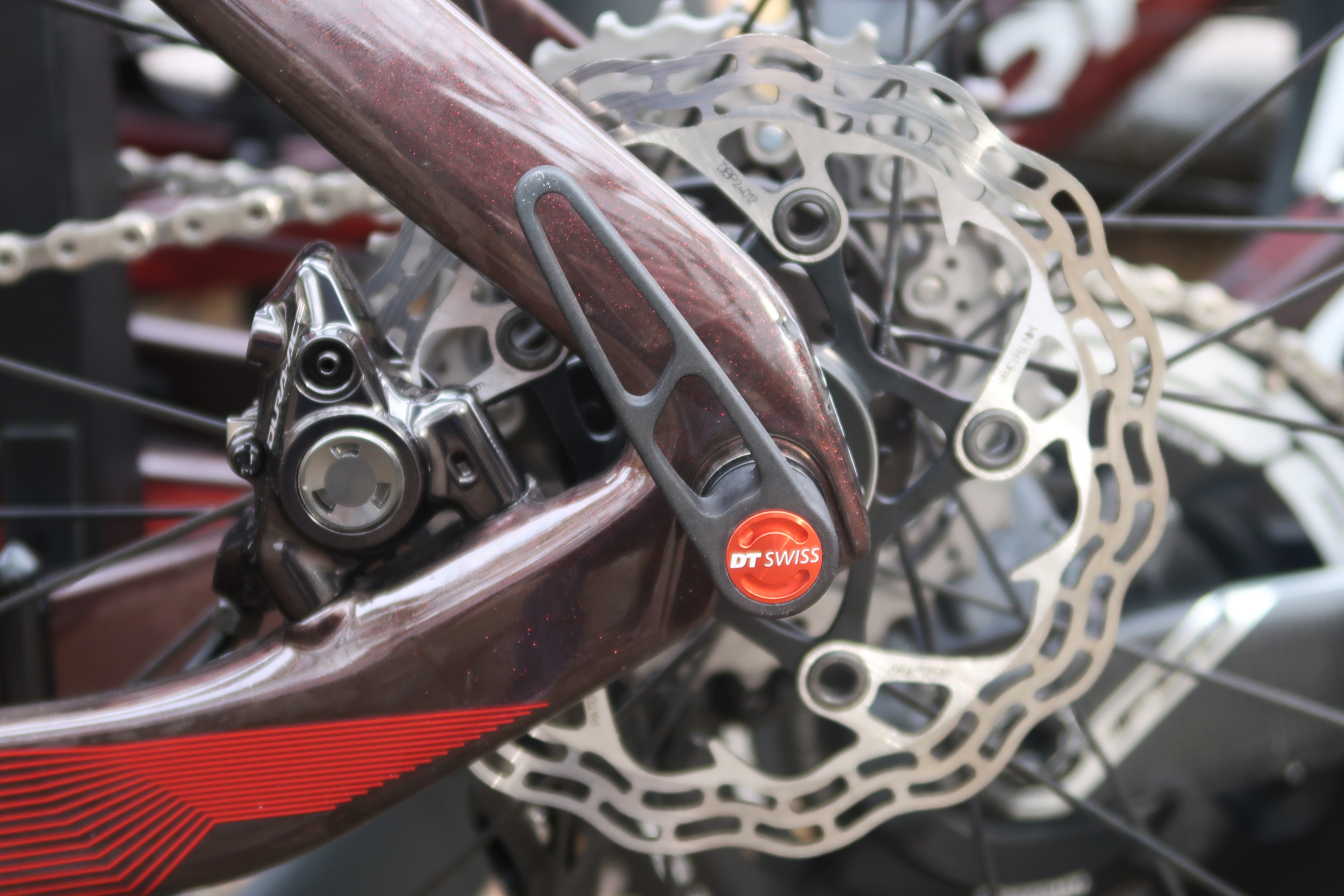
(Image credit: Tom Davidson)
Punctures – and therefore wheel changes – are inevitable at a race like Paris-Roubaix. To help make changes easier, Lotto left the thru axle levers on the wheels, meaning they can unscrew them quickly by hand.
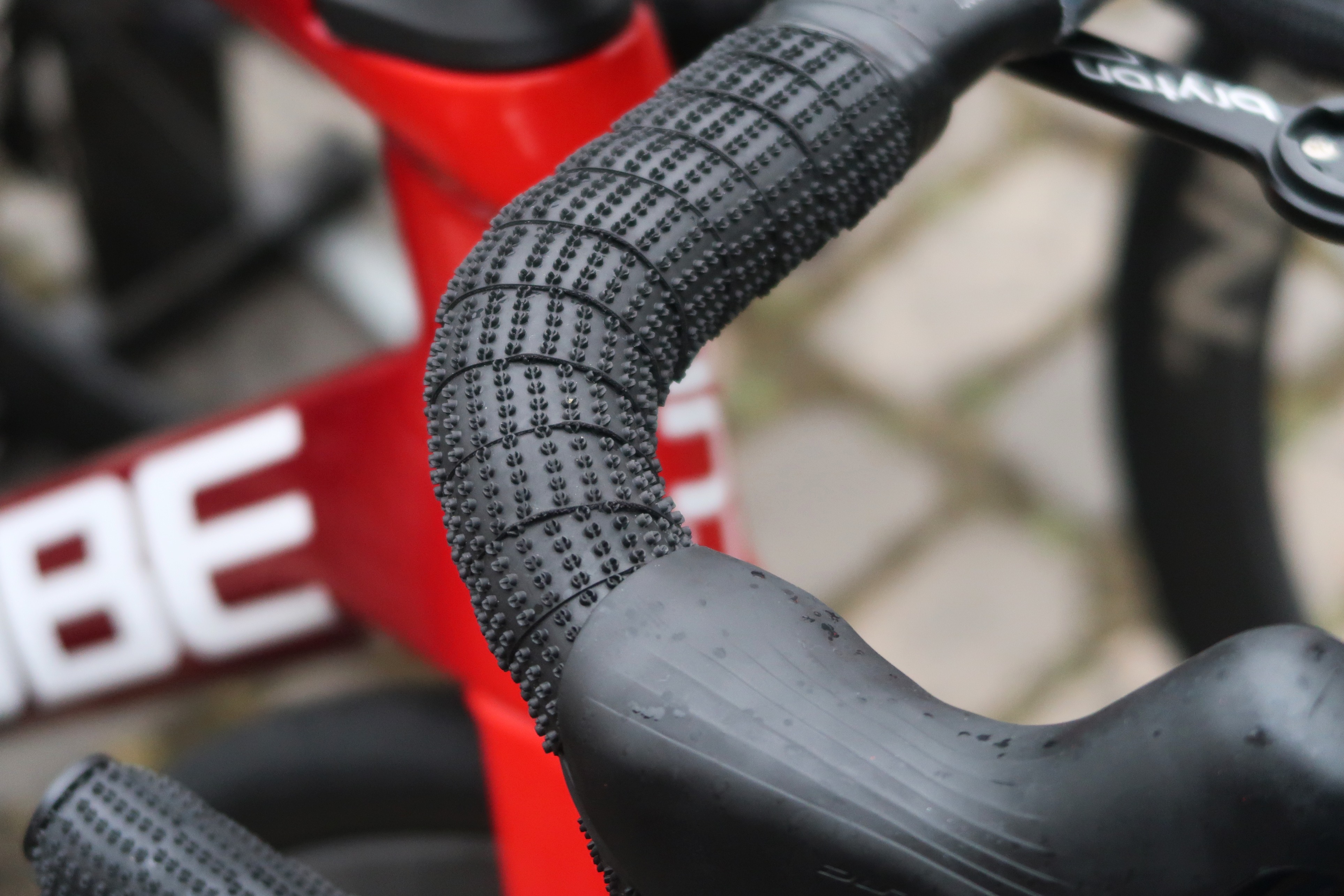
(Image credit: Tom Davidson)
And finally, this bar tape over at Intermarché-Wanty caught our attention. It’s grippy, padded, and appears somewhat shock absorbent, too. Most importantly, though, it looks very cool.

